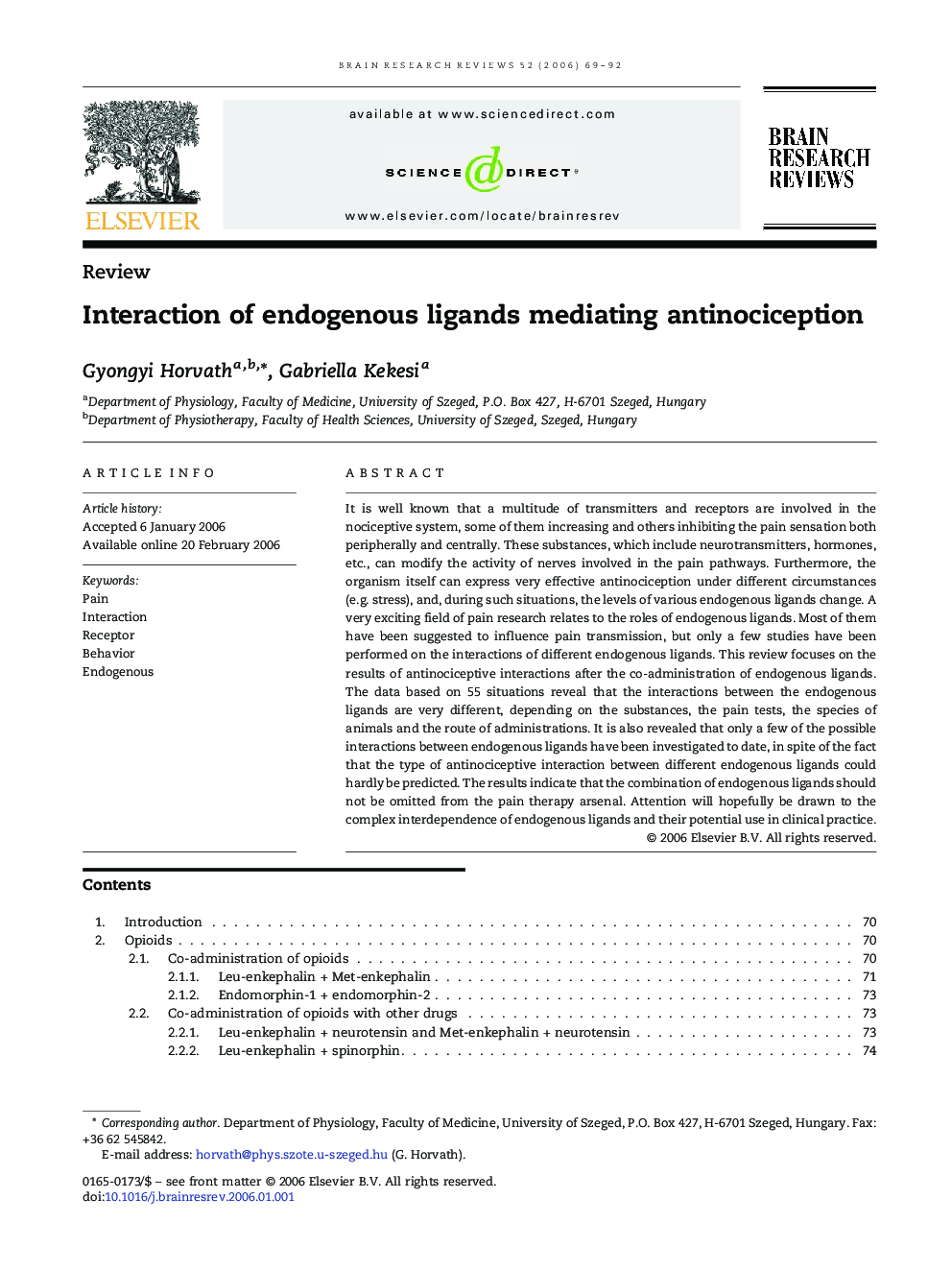| Article ID | Journal | Published Year | Pages | File Type |
|---|---|---|---|---|
| 4334011 | Brain Research Reviews | 2006 | 24 Pages |
It is well known that a multitude of transmitters and receptors are involved in the nociceptive system, some of them increasing and others inhibiting the pain sensation both peripherally and centrally. These substances, which include neurotransmitters, hormones, etc., can modify the activity of nerves involved in the pain pathways. Furthermore, the organism itself can express very effective antinociception under different circumstances (e.g. stress), and, during such situations, the levels of various endogenous ligands change. A very exciting field of pain research relates to the roles of endogenous ligands. Most of them have been suggested to influence pain transmission, but only a few studies have been performed on the interactions of different endogenous ligands. This review focuses on the results of antinociceptive interactions after the co-administration of endogenous ligands. The data based on 55 situations reveal that the interactions between the endogenous ligands are very different, depending on the substances, the pain tests, the species of animals and the route of administrations. It is also revealed that only a few of the possible interactions between endogenous ligands have been investigated to date, in spite of the fact that the type of antinociceptive interaction between different endogenous ligands could hardly be predicted. The results indicate that the combination of endogenous ligands should not be omitted from the pain therapy arsenal. Attention will hopefully be drawn to the complex interdependence of endogenous ligands and their potential use in clinical practice.
